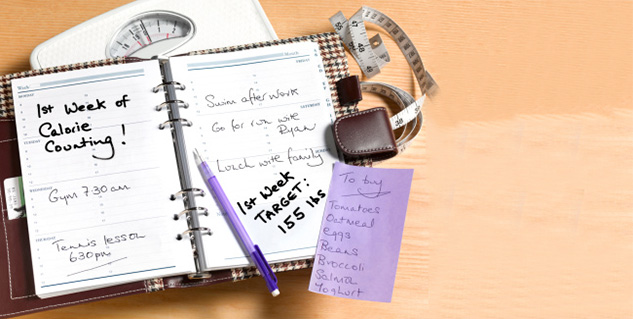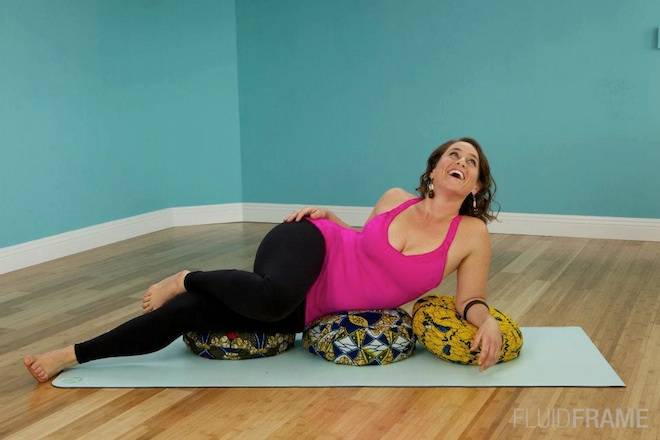Slow and Steady Weight Loss – Baby Steps to Help you Reach Your Diet and Fitness Goals
It's tempting to start a new diet and fitness regimen with a bang. But, too often, the more dramatic and sweeping the start, the sooner we fall off the weight loss wagon. Maybe we eat too few calories during the day and then can't stop the binge by dinnertime. Or our overzealous workouts result in an injury and we're couch-bound for a while.
This time, try a more gradual approach. Adopt small lifestyle changes that you can live with, and see if it helps you to keep it up over the long term.
Here's how to get started today:
1. Without making any changes to your diet or fitness routine at the start, begin keeping a "lifestyle log." In this journal (which can be as simple as a spiral bound notebook or a wordpad document on your computer) record everything you eat, how much water you drink, and how much physical activity you perform. Also log any dietary supplements or medication that you take as well as how much sleep you get each night. Each day, record a few notes about how all of these lifestyle choices make you feel, and work to identify small changes that may make lasting changes over time.
2. Weigh in. Before your gradual "baby step" diet, weigh yourself and write down all of your measurements. Log these in your lifestyle log, and record the changes on the first of every month. Along with your weight, you'll want to record the measurements of your bust, waist and hips. With this kind of slow weight loss program, you won't be obsessing over your weight or your dress size, but it's nice to have a benchmark so you can monitor your progress.
3. Ask yourself (often), "What kind of physical activity do I naturally enjoy?" Make time for that activity at least 5 times a week. If you're already doing it each day, do it for a little longer (or at a higher intensity.) As that level of exertion becomes easy for you, dial it up again so you are continually burning more calories and getting into continually better physical shape.
4. When it comes to your diet, brainstorm a few "small rules" for yourself. Adopt them one at a time. When one rule becomes easy, work on the next. A few examples: No food after 8 pm; no snacking from 3 to 5 in the late afternoon; no more trans fats; 8 servings of fruits and vegetables a day; drink 10 glasses of water each day; remember to take your calcium supplements; call a friend every week to walk with you on the weekend; try a new sport once each month; buy a pedometer and take 10,000 steps each day, and so on.
5. Use subtle motivational techniques, such as behavior modification tapes or vision boards. A vision board can be tremendously motivating and works mostly in the subconscious. Creating one is as simple as making a collage on a sheet of paper. Include photos of yourself at your best, as well as photos of your ideal body. Maybe you'll include photos of all the activities you'll be doing once your diet and fitness goals are met. Maybe you'll include motivational quotes and the proof of your progress so far. Keep your vision board where you can see it throughout the day, particularly at those times of day when your motivation can start to flag (for me, this is late afternoon; for others, it's late at night.)
6. Give yourself small rewards. When you lose a dress size, buy a new dress. If you exercised every day this week, treat yourself to some vibrant, fresh cut flowers. Simple celebratory things such as these will remind you of the simple changes you are making to create monumental differences in your life.
-
Perfect Diets To Get Fit
Being fit and having good health is a function of both healthy exercis
-
Your Five Techniques To Dropping That Fat Once And For All
Should you be trying to find a fast method to lose weight, you sh
-
How To Get Your Best Body & Feel Great Effortlessly
-
Learn How Coconut Oil Helps In Weight Loss
There are many foods and food choices that are often overlooked in the
-
7 Ways To Lose Weight Without Exercise
Shutterstock SPECIAL FROM Grandparents.com Ye
-
How Late Is Too Late To Eat?
Checking a clock may be as helpful as counting calories
- DON'T MISS
- The Causes Of Childhood Obesity
- Melt The Pounds Away By Walking For Exercise
- Super Easy Weightloss, And Kills Cravings, Too
- Walking Your Way to Weight Loss
- The Right Attitude To Losing Weight In A Georgetown Fitness Bootcamp
- Dangerous Weight Loss Methods
- Reduce Double Chin in Natural and Surgical Way
- Children
- Tricks And Tips To Jump-Start Your Weight Loss Program
- Why Your Workout Is Wasting Your Time




